| If you can't see this e-mail properly, you can also view it online |
 |
|
NetLetter #1520 | October 31, 2023 |
|
|
 |
|
|
 |
|
|
|
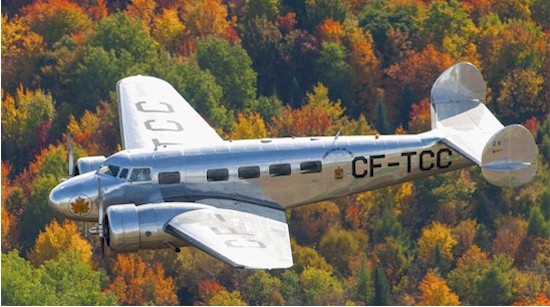 |
|
|
CF-TCC - L10A over Fall leaves near Oka, Quebec
Photo by Brian Losito
October 8, 2019
when TCC was still airworthy
It is on now on permanent display at the
Royal Aviation Museum in Winnipeg.
|
|
|
|
|
|
|
|
|
|
Dear Reader,
Welcome to The NetLetter, established in 1995 as a dedicated newsletter for Air Canada retirees, we have evolved into the longest running aviation-based newsletter for Air Canada, TCA, CP Air, Canadian Airlines and all other Canadian-based airlines that once graced the skies.
The NetLetter is self funded and is always free to subscribers. It is operated by a group of volunteers and is not affiliated with any airline or associated organizations.
The NetLetter is published on the second and fourth weekend of each month. If you are interested in Canadian aviation history, and vintage aviation photos, especially as it relates to Trans-Canada Air Lines, Air Canada, Canadian Airlines International and their constituent airlines, then we're sure you'll enjoy this newsletter.
Please note: We do our best to identify and credit the original source of all content presented. However, should you recognize your material and are not credited; please advise us so that we can correct our oversight.
Our website is located at www.thenetletter.net Please click the links below to visit our archives and for more info about The NetLetter.
|
 
|
Note: to unsubscribe or change your email address please scroll to the bottom of this email.
|
|
|
|
|
|
|

NetLetter News
|
|
|
|
|
 We have welcomed 140 new subscribers so far in 2023. We have welcomed 140 new subscribers so far in 2023.
We wish to thank everyone for the continuing support of our efforts.
|
|
|
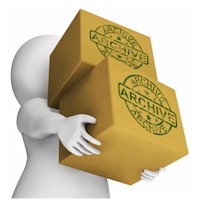 Back issues of The NetLetter are available in both the original newsletter format and downloadable PDF format. Back issues of The NetLetter are available in both the original newsletter format and downloadable PDF format.
We invite you to visit our website at www.thenetletter.net/netletters to view our archives.
Restoration and posting of archive issues is an ongoing project. We hope to post every issue back to the beginning in 1995.
|
|
|

We always welcome feedback about Air Canada (including Jazz and Rouge) from our subscribers who wish to share current events, memories and photographs.
Particularly if you have stories to share from one of the legacy airlines: Trans-Canada Air Lines, Canadian Airlines, CP Air, Pacific Western, Maritime Central Airways, Eastern Provincial, Wardair, Nordair, Transair, Air BC, Time Air, Quebecair, Calm Air, NWT Air, Air Alliance, Air Nova, Air Ontario, Air Georgian and all other Canadian based airlines that once graced the Canadian skies.
Please feel free to contact us at This email address is being protected from spambots. You need JavaScript enabled to view it.
We will try to post your comments in the next issue but, if not, we will publish it as soon as we can.
Thanks!
|
|
|
|
 |
|

Subscriber Feedback
|
|
|
|
|
Barbara Dunn shares this memory -
As always, I enjoyed reading the latest issue of The NetLetter #1519 especially the article about the French Immersion course in Jonquière.
I was lucky to attend this course in 1982. The family I lived with M and Mme Vaillancourt and their 3 sons, who were given very strict instructions about speaking English to me and this was followed to the letter.
It was not until the last dinner with the family that I discovered that the 3 sons all spoke perfect English. The experience was invaluable and one I remember fondly. While speaking French in Vancouver was not the norm, I did manage to maintain my bilingual status for the rest of my career. As a Greencoat volunteer at YVR, I am always surprised at what is still in my memory bank after all these years.
Thanks for the memories,
Barb
|
|
|
Diane Kleiman Bellamy shares this memory -
My husband, David, and I had a wonderful experience with Calm Air about 15 years ago on our trip to Churchill, Manitoba to visit the polar bears.
We few from Winnipeg to Churchill with a quick stop in Thompson. We enjoyed a wonderful full meal and terrific service. The return trip was equally enjoyable.
Diane Kleiman Bellamy, AC 1967-1998
|
|
|
 |
|

Submitted Photos
|
|
|
|
|
Retired Air Canada corporate photographer, Brian Losito, sent us the following group of memory triggers from the Air Canada archives.
|
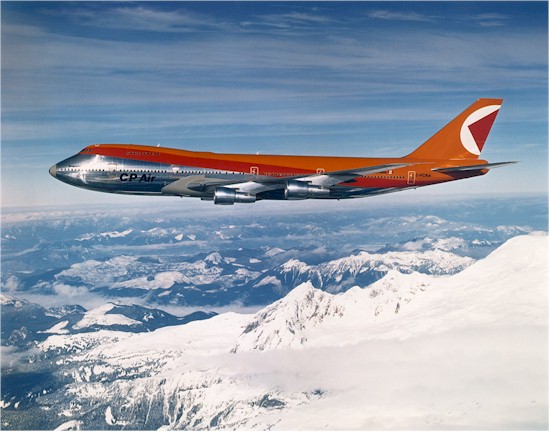 |
|
C-FCRA - Boeing 747-217B
Delivered to CP Air November 15, 1973
|
|
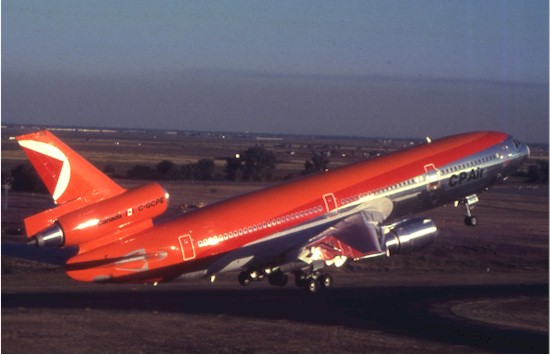 |
|
C-GCPE - McDonnell Douglas DC-10-30
Delivered to CP Air November 1979
|
|
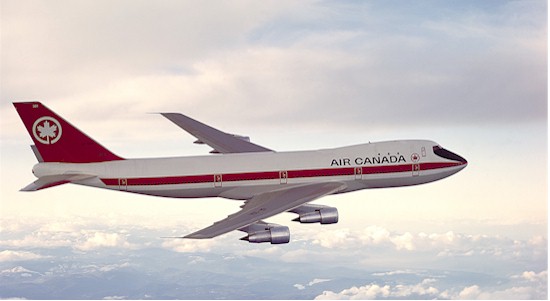 |
|
CF-TOA - Boeing 747-133
Air Canada's first B-747 - delivered February 11, 1971
|
|
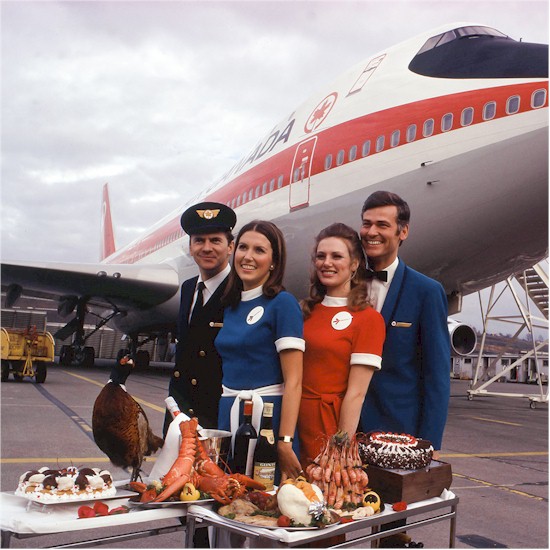 |
|
The food and top notch service offered in First Class of the B747-100. The In-Flight crew loved working the B-747 since the large crew meant they only had to handle thirty-five passengers each on a full load.
The passengers loved a twelve-channel selector for movies and music in both French and English.
|
|
|
 |
|

Remember When
|
|
|
|
|
Terry Baker recalls –
In September 1977, the ACRA annual golf was held in Shannon, Ireland, which I attended.
One of my foursome was Stan Mulvey who, on a par three, aced the hole - his first.
After the game, Stan and I went to the clubhouse and saw the pro to whom I introduced Stan. The pro said the appropriate congratulations followed by a pregnant pause. I then asked if the club recognizes such a personal event to which the pro said "No, not really, it happens very frequently on that short par 3."
I pointed out that the event was Stan's first ace and the pro, reluctantly I thought, grabbed a sleeve of golf balls and handed it to Stan, then walked away. Game over!
|
|
|
|
 |
|

Air Canada News
|
|
|
|
|
Although not actually a news item, we thought our readers might be amused by a video, linked below, of 5 decades of Air Canada commercials.
Posted on YouTube by 'Rewind Canada'.
|
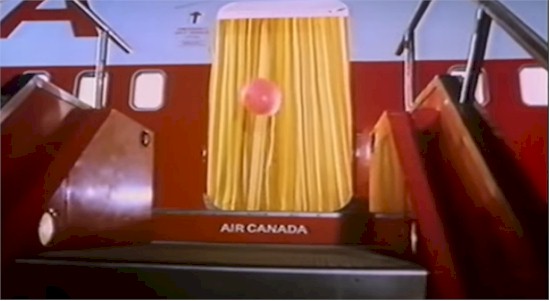 |
|
|
Air Canada Unveils First Upgraded Airbus A321 with an All New Interior and Industry-Leading Cabin Technology.
Customers on board Air Canada flight AC692 operated with Fin 451 (C-GITU) Saturday shared a pilot's eye view of the take-off due to new exterior cameras connected to the aircraft's seatback entertainment system. The new camera feature, a first for a narrow-body aircraft, is one of several innovations unveiled with the airline's first upgraded Airbus A321, which has been redesigned from nose to tail.
Source: Air Canada Media Centre
|
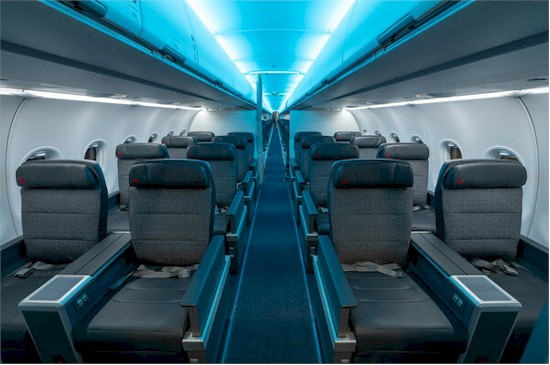 |
|
 for the latest posts at the Air Canada Media Centre. for the latest posts at the Air Canada Media Centre. |
|
 Click the logo to open the Air Canada YouTube channel. Click the logo to open the Air Canada YouTube channel. |
|
|
 |
|

Star Alliance News
|
|
|
|
|
Air France-KLM Group To Acquire Non-Controlling Stake In SAS
The Air France-KLM Group has purchased 19.9% of Scandinavian flag carrier SAS as part of the airline's restructuring efforts.
SAS is now owned by a consortium led by American private equity firm Castlelake (32%), Lind Invest, and the airline group, which together will invest $1.175 billion.
With AF-KLM stepping in, SAS plans to leave Star Alliance and begin commercial operations with the French-Dutch giant, paving the way for the carrier to move to the SkyTeam alliance.
Source: SimpleFlying.com
|
|
|
United Airlines Orders Mix Of 110 New Boeing, Airbus Aircraft
United Airlines announced it is posting its second giant order for new-generation aircraft.
Last December, the airline ordered 100 Boeing 787 Dreamliners as it continues replacing aging aircraft types and places more focus on international flying. The new order splits allegiance between Boeing and Airbus.
United expects to receive 50 more Boeing 787-9's between 2028 and 2031 and 60 single-aisle Airbus A321neo models (new engine option) between 2028 and 2030.
The order also includes options for an additional 50 Dreamliners and 40 more Airbus A321neos.
Source: AVWeb.com
|
|
|
 |
|
TCA/AC People Gallery

|
|
|
|
 Photos found on Facebook Photos found on Facebook |
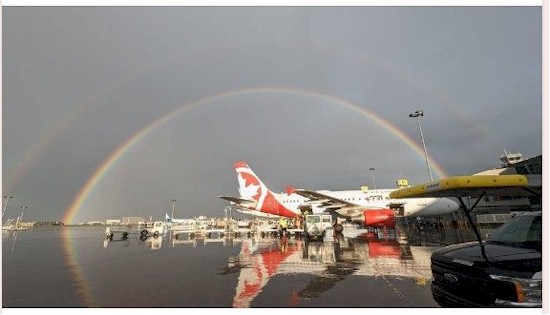 |
|
Posted by 'Silver Man'
Rouge at YUL under a rainbow
|
|
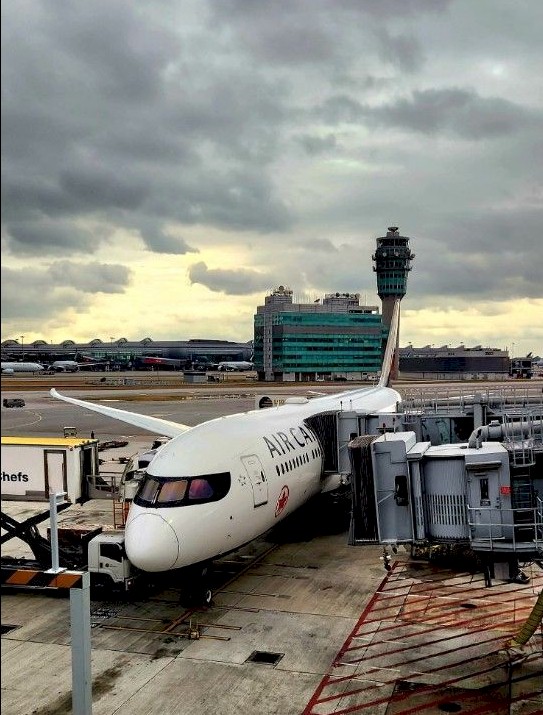 |
|
Posted by 'C.R. Rain'
Flight AC008 at HKG, the flight left just before Typhoon Koinu arrived.
|
|
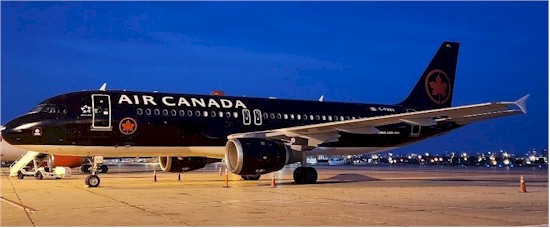 |
|
Posted by 'Bushu Herdilaziz'
Fin 416 in new Jetz livery
|
|
|

Found in 'Horizons' magazine
|
|
Issue dated April 1981
|
|
Quebec rocks and rolls.
In 1981 the Quebec City ACRA chapter held a rock 'n' roll party as part of its winter carnival festivities.
In this photo from the left: Michel Marticotte, Sylvie Rochette, Andre Claveau, new ACRA President; Sylvie Rochette and Jacques Rochette.
Yes, there were two 'Sylvie Rochettes' in Quebec City, they were married to brothers.
|
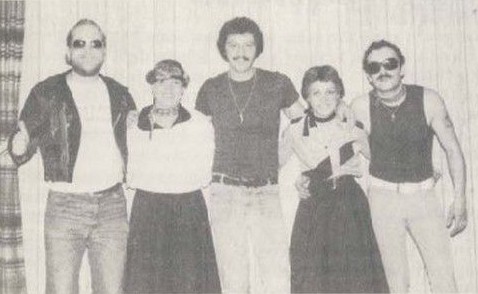 |
|
|
Issue dated October 1994
|
|
A beautiful entrance into Japan.
After a 35-year wait, members of the Air Canada team finally saw the maple leaf fly to Japan, as the inaugural flight 891 arrived in Osaka on September 21, 1994.
Hollis Harris (centre) poses with four members of the crew who operated inaugural flight.
They also participated in a press conference announcing the introduction of our daily service with the brand new A340 aircraft, beginning in June 1995.
From left to right: Captains George McKay and Jim Griffith, and Flight Attendants Takako Toriumi and Alain Grenier.
|
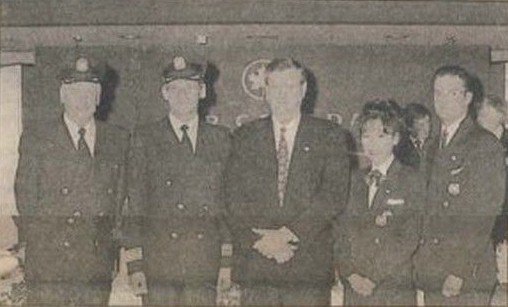 |
|
|
Air Canada float wins in Osaka parade.
The Air Canada 'Dreams Take Flight' float won second prize in the international category at the Midosuji Parade in Osaka on October 9.
Close to 1.26 million spectators attended the parade in which 12,000 participants from 15 countries were directly involved. A total of 33 floats could be seen.
The Air Canada float was built by the Calgary-based team of Ray Rutherford, Earl Fried and Vivian Lloyd.
Anne Kassoff and some of her in-flight crew members rode on the float and walked alongside of it. Japanese and Canadian kids along with their parents were also part of the Air Canada float to support the theme of the parade - "Bringing the world together".
|
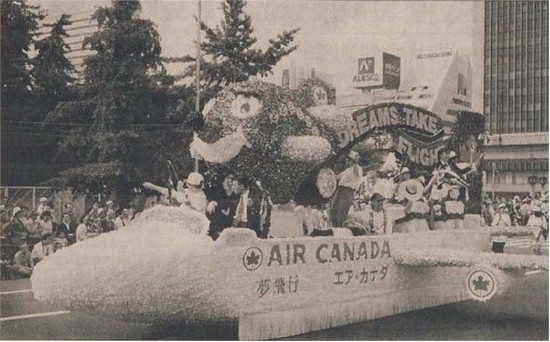 |
|
|
Sherry Oliver, Lead Customer Service Agent, Los Angeles celebrates her 25th service anniversary with colleagues.
Front row, left to right: Customer Service Agents Berit Vickter, Sherry Oliver and Diane Kelly.
Back row, left to right: David Burke, Manager, Customer Service; Jim Cordero, Customer Service Agent; Myrna Lawrence, Lead Training Instructor and Miguel Morales, Customer Service Agent.
|
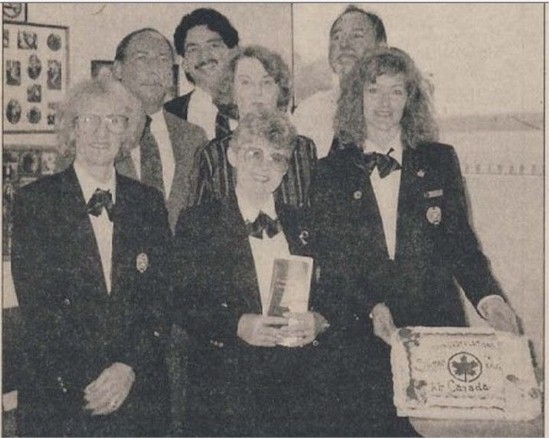 |
|
|
They did it!
A celebration was held to say "thank you" to Technical Operations and Purchasing and Supply teams for their hard work in delivering Projects Value and Image.
About 250 people worked on the projects. Close to 28 aircraft were repainted and 76 interiors converted.
In our photo are from left to right: Kevin Timmons, A/Material Planner; Hunter Lee, Engineer; Lois Pickard, Acting Supply Coordinator; John Dickie, Vice President, Technical Operations; Jean-Jacques Bourgeault, Executive Vice President and Chief Operating Officer; Ray Poulin, Foreman; Jean Trépanier, Foreman; Lamar Durrett, Executive Vice President, Technical Operations/Corporate Services; Luc Lavoie, Mechanic; Mauricio Emergui, Mechanic and Yves Théroux, Certificated Aircraft Technician.
|
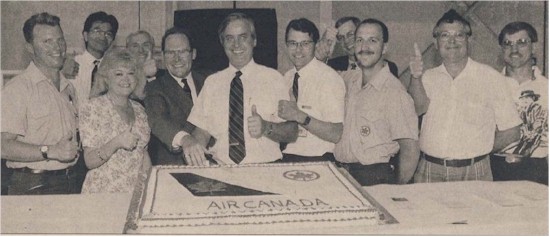 |
|
|
 |
|
CP Air, Canadi>n People Gallery
|
|
|
|
|
 Click the YouTube icon to view a video from the Time Air Historical Society looking back in the family tree that was Canadian Airlines. Click the YouTube icon to view a video from the Time Air Historical Society looking back in the family tree that was Canadian Airlines.
Below are some of the many airlines which would eventually become part of Pacific Western and / or Canadian Airlines. We have listed the years active and home bases.
|
|
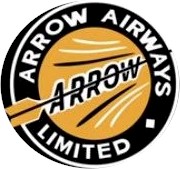 |
Arrow Airways - 1935 -1956
The Pas, Manitoba
|
|
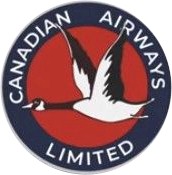 |
Canadian Airways - 1926 - 1941
Established as
Western Canadian Airways
Winnipeg, Manitoba
|
|
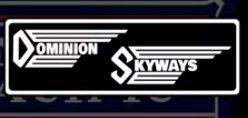 |
Montreal & Dominion Skyways
1935 -1942
Montreal, Quebec
|
|
 |
Starratt Airways - 1932 -1942
Hudson, Kenora District
|
|
 |
Wings - 1942 |
|
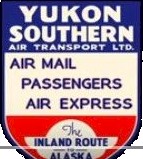 |
Yukon Southern Air Transport Ltd.
1938 - 1941
Edmonton, Alberta
|
|
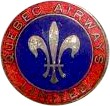 |
Québec Airways
1935 - 1942
Montreal, Québec
|
|
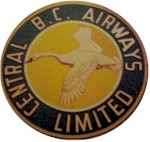 |
Central British Columbia Airways
1946 - 1953
Prince George, B.C.
|
|
 |
Kamloops Air Services
early 1950's
Kamloops, B.C.
|
|
 |
Ginger Coote Airways
1938 - 1942
Chilliwack, B.C.
|
|
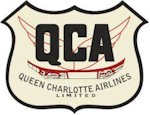 |
Queen Charlotte Airlines
1946 - 1955
Vancouver, B.C.
|
|
|
 |
|

Featured Video(s)
|
|
|
|
|
Videographer, Alex Praglowski, posted this video of the newest addition to the RCAF fleet, the Airbus CC-330 Husky.
This aircraft was originally delivered to Kuwait Airways, as an A330-243, on August 12, 2015 and delivered to the RCAF on August 21, 2023, after modifications.
It is one of nine aircraft being acquired to replace the aging fleet of five CC-150 Polaris aircraft, originally part of Wardair's fleet of 12 Airbus A310's, disposed of after Wardair was acquired by Canadian Airlines in 1989.
See also:
en.wikipedia.org/wiki/Airbus_CC-330_Husky
www.planespotters.net/airframe/airbus-a330-200
|
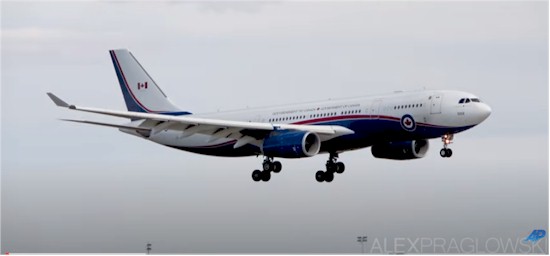 |
|
|
 |
|

Odds and Ends
|
|
|
|
|
Commercial Aviation
History was made on March 3, 1919 when Seattle-based aircraft manufacturer William Boeing and pilot Eddie Hubbard carried 60 letters from Vancouver's Coal Harbour to Seattle, marking the first international airmail delivery.
The first commercial cargo flight in Canada took place in October 1913, when Montréal newspapers were carried from Montréal to Ottawa. Unfortunately the aircraft crashed on the return takeoff. In 1919 the Canadian Pacific Railway requested parliamentary approval to amend its charter to include air transportation. The government extended regulation to cover the fledgling industry by passing the Aeronautics Act (1919), which created the Air Board to consider such requests.
The first commercial passenger flight took place in 1920, when 2 bush pilots flew a fur buyer north to The Pas, Manitoba from Winnipeg. One month later, the first regular services were initiated when Imperial Oil chartered several Junkers aircraft to ferry men and supplies from Edmonton to the newly discovered oil fields at Fort Norman (now Tulita), NWT.
From 1920 to 1937 air transport expanded rapidly, although it still comprised a large number of small carriers, operating predominantly north-south routes, feeding traffic from the railways to the interior. In 1927 the Post Office authorized air delivery in cases where winter interrupted surface transportation.
Bush pilot Grant McConachie formed United Air Transport in 1933, with one Fokker Universal aircraft.
In 1938 the company became Yukon Southern Air Transport, connecting Vancouver, Edmonton and the Yukon. McConachie later became president of Canadian Pacific Air Lines.
When United Airlines' first flight from Seattle to Vancouver arrived on 1 July 1934, more people were on hand to greet the aircraft than were on board. (The Boeing 247D could carry only 10 passengers.)
Source: www.thecanadianencyclopedia.ca
|
|
|
 |
|
 Wayne's Wings Wayne's Wings
|
|
|
|

Canadian Airways - Historical Pioneer of Canadian Aviation
I love history and being a part of compiling our little nostalgic newsletter provides me with constant opportunity to dive into the internet and always be learning about the evolution of aviation in Canada.
While researching the airlines that would eventually be absorbed into Canadian 'Airlines', I learned about Canadian 'Airways' and its importance in history.
The official name of YWG is Winnipeg James Armstrong Richardson International Airport; a well deserved honour to a true entrepreneurial pioneer in aviation.
Western Canada Airways (WCA) was founded in Winnipeg by James Armstrong Richardson Sr. in 1926 and was fully established by 1930 following WCA's acquisition of a number of smaller regional competitors. At its peak, Canadian Airways had a total of 51 aircraft of various types that provided both regular scheduled service between settlements as well as charter service to bush locations.
Richardson was made director of Canadian Pacific Railway in 1927 and envisioned the creation of an airline to provide similar service as the CPR. In order to expand WCA at the national level, Richardson convened a syndicate, which led to the formation of the Aviation Corporation of Canada in July 1929. The purpose of this formation was to help in the acquisition of eastern Canadian aviation companies to facilitate the planned expansion.
In 1930, Canadian Airways Limited was established after the acquisition of several aviation companies, including the previously mentioned Aviation Corporation of Canada. Richardson's goal was realized.
Richardson became the president and general manager. Richardson's advanced logistical knowledge, business sense, vision and technological innovation, allowed him to piece together a vision for Canadian Air Services heading into the future.
However, by 1936, the Canadian government took control of civil aviation and established the Department of Transport, operated under Minister C. D. Howe.
Using Richardson's Canadian Airways business plan and key personnel from the airline, Howe formed a government-run entity known as Trans-Canada Air Lines (TCA) in 1937 leaving Richardson feeling betrayed because he had hoped for support rather than the creation of a government owned competitor, leaving Canadian Airways vulnerable.
At some point in 1939, Canadian Pacific Railway Limited, now led by Sir Edward Wentworth Beatty began to implement a plan to purchase ten bush airlines from around Canada to form a new airline that would become Canadian Pacific Airlines which would, in turn, absorb Canadian Airways in 1942.
Additional info:
en.wikipedia.org/wiki/Canadian_Airways
en.wikipedia.org/wiki/James_Armstrong_Richardson_Sr.
|
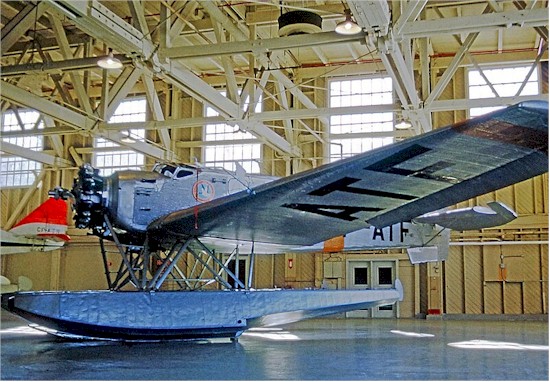 |
|
Junkers W.34 CF-ATF of Canadian Airways
displayed at Rockcliffe Ottawa in 1971
Photo by: RuthAS
|
|
|
 |
|

Terry's Trivia and Travel Tips
|
|
|
|
|
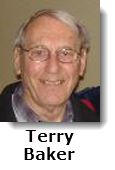 Terry Baker, co-founder of the NetLetter scours the internet for aviation related Trivia and Travel Tips for you, our readers, to peruse. Terry Baker, co-founder of the NetLetter scours the internet for aviation related Trivia and Travel Tips for you, our readers, to peruse.
|
|
Air Canada and the Supersonics.
Source: Clayton Glenn posted May 22, 2010 on the CAHS archives
In November 1962, Britain and France joined forces to develop the Concorde supersonic transport (originally spelled Concord by the British, but changed in December 1967).
The airplane was to fly at Mach 2.2 (about 1,450 mph) non-stop from London or Paris to New York, and carry a payload of 20,000 pounds (100 passengers and baggage).
In early 1966, Air Canada still had not warmed to supersonic transports despite pressure being brought by Sir George Edwards, Chairman of British Aircraft Corporation and a good friend of Gordon McGregor, our president. About 50 Concorde and 100 US-SST line positions had already been spoken for.
|
 |
|
Herb Seagrim, our Vice President of Operations, had laid down the party line to the rest of us – that we were not going to be rushed into a decision. However, if pushed, the preferred choice was the US-SST B2707, as it had the potential for superior economics despite a high initial cost. The Concorde would be considered only if it could be established that Air Canada could have competitive problems due to late delivery of the US product. Because of the forecast competitive situation (see table 1), and to pacify Mr. McGregor, the decision was made to place deposits on both types.
Herb Seagrim recommended to Gordon McGregor that the airline proceed to hold line positions for four Concordes and six US-SSTs. McGregor agreed, and our proposals for the supersonic program went before the Air Canada Board of Directors on September 27, 1966. A general overview was presented by Chief Engineer Jack Dyment, followed by Ian Macdonald from the engineering department who described the development of the supersonic airplanes, their physical characteristics and mission potential.
It is interesting that the majority of our supersonic operations were projected for North American routes.
As for 1974 when Air Canada would have four Concordes, only three of the seven long-haul flights would be overseas, increasing to just five of 12 by 1977. The fact that almost 60% of supersonic flying was to be continental would later become a major factor in the decision to exit the SST program.
In the summer of 1968, I was approached by BOAC in connection with its proposed Concorde operation from London to Tokyo via Frobisher Bay (Iqaluit) and Cold Bay in the Aleutians. The flight path would take the airplane over a substantial amount of northern Canada and BOAC was concerned as to whether or not the Canadian authorities would approve.
I prepared a document that was signed jointly by Yves Ménard, our Vice President of Marketing, and myself, Vice President, Operations Planning. After clearing it with Yves Pratte, chairman and CEO, we presented it to the board. There was little or no debate about withdrawal, perhaps even a little sigh of relief.
Fortunately, the decision didn’t cause any ripples. About 10 days later, Pratte was in Paris on other business and expecting plenty of flack from the French press. Beyond a minor reference, there was nothing noteworthy.
The storm came later when the major US operators announced their cancellations – which they all did.
One by one, the US and foreign airlines pulled out of the program, leaving only BOAC and Air France, which initially ordered nine Concordes between the two of them.
Editors' Note: 14 production Concordes were eventually built, 7 each for British Airways and Air France, in addition to 6 prototype and development aircraft.
|
|
|
 |
|

Smileys
|
|
|
|
|
Our cartoon by Fernando Moura, a flight attendant in Vancouver, first appeared in the "CP Air News" magazine issued August 1981.
The caption reads:
"First they stripped me to the skin for dollar conservation, and then the Marketing Department thought I'd look good in a bikini to promote the South Pacific route. It's cool, honey, but I'll tell you one thing, come winter they'd better not schedule me to Whitehorse".
|
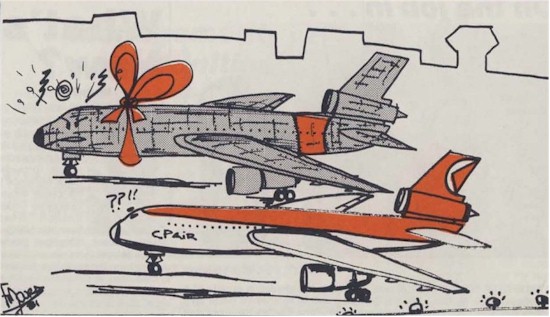 |
|
|
 |
|
|
|
|
The NetLetter Team
|
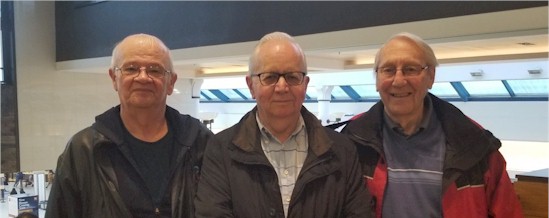
|
|
Wayne Albertson, Ken Pickford & Terry Baker
Richmond, British Columbia - December 2019
(Bob Sheppard was not available for the photograph)
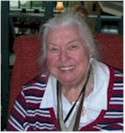 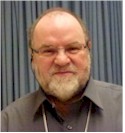
We wish to honour the memories of
Vesta Stevenson and Alan Rust.
They remain a part of every edition published.
|
|
|
|
|
Subscription Management
We presently have the following subscription info within your profile:
First Name:
Last Name:
Email:
City:
Province/State/County:
Country:
Updating your profile: If you'd like to change your email or update the information in your profile, please click on the button below.
We appreciate knowing your city & country of residence so that we can add content relating to your region.
Thank you.


Unsubscribe - We'd hate to see you go, but realize the NetLetter isn't for everyone. If you never read the NetLetter or delete it without reading it, please do us both a favour and unsubscribe.

|
|
|
|
|
|
|
E&OE - (errors and omissions excepted) - The historical information as well as any other information provided in the "NetLetter" is subject to correction and may have changed over time. We do publish corrections (and correct the original article) when this is brought to our attention.
Disclaimer: Please note that the NetLetter does not necessarily endorse any airline related or other "deals" that we provide for our readers. We would be interested in any feedback (good or bad) when using these companies though and will report the results here. We do not (normally) receive any compensation from any companies that we post in our newsletters. If we do receive a donation or other compensation, it will be indicated as a sponsored article or link.
|
|
|
|
|
































 We have welcomed 140 new subscribers so far in 2023.
We have welcomed 140 new subscribers so far in 2023.








 Photos found on Facebook
Photos found on Facebook



















 Wayne's Wings
Wayne's Wings





